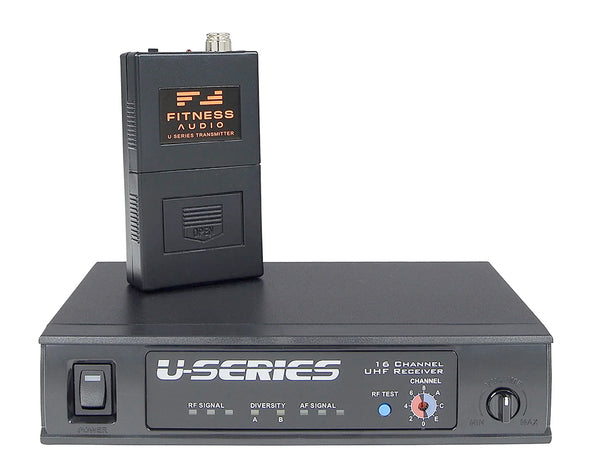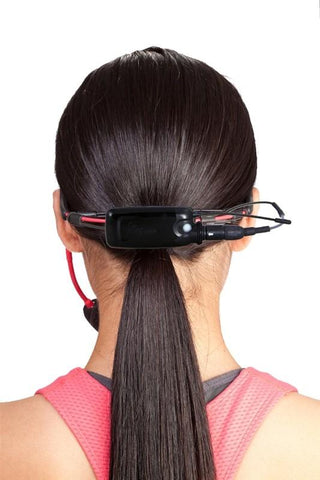
8AM to 4PM PT
sales@avnow.com
8AM to 4PM PT
sales@avnow.com

In the realm of fitness instruction, group-exercise classes, and events, communication is not just an accessory—it's a foundational element that can ramp up an experience from good to unforgettable. The surge of innovative technology in the audio world has ignited a crucial conversation within these industries: auto-frequency scanning microphone systems versus manual-frequency setting microphone systems in wireless microphones.
Fitness instructors, event planners, and gym owners alike are constantly in pursuit of audio solutions that promise reliability, smooth operation, and minimal interference. It's the crux of their craft, providing an audible pathway for instructions, music, and motivation. But with the fitness audio market teeming with options, how does one decide which system is best suited for their specific needs?
This comprehensive blog post sheds light on the distinct advantages and use cases for both auto and manual frequency style microphone systems, guiding audio enthusiasts towards an informed decision that aligns with their operational flow and enhances their audience's experience.
Understanding Frequency Scans
Before we plunge into the juxtaposition, it's vital to grasp the technology behind each microphone system. Auto frequency scanning, a relatively new addition to the wireless microphone repertoire, is a feature that enables microphones to search for available frequencies in the radio spectrum and self-select the best one. This hands-free process is known for its simplicity and speed, making initial setup a breeze for users. However, it's not immune to the possibility of signal congestion, especially in urban environments or venues close to broadcasting towers.
Photo: Shure GLXD+ Receiver Screen Example
Shure GLXD+ Microphone Systems are a great example of auto frequency scanning microphone systems. The Shure Smart frequency management continuously monitors the spectrum and seamlessly moves to a clean channel in case any interference appears. Meaning, you don't have to do anything if interference happens, it moves to a new clean channel without the user knowing. The Shure GLXD+ microphone system offers one receiver and transmitter with four different fitness headset microphone options available for this mic system. View all four models here.

Auto-Frequency Advantages in Fitness and Events
For fitness instructors leading high-energy classes or events taking place in diverse locations, auto frequency scanning can be a game-changer. It allows for quick setup in unfamiliar territories and can potentially evade manual tuning errors that lead to audio hiccups mid-session. Professionals often cite the convenience of auto-scanning as a critical time-saver, freeing them to focus on their craft rather than technical fiddling.
Auto Frequency Drawbacks
Yet, despite its convenience, auto-frequency systems can still experience interference that leads to signal dropouts, although this is rare. The unpredictability is commonly from an uncharged battery or the user not taking the time to setup up the system or plug it in properly.
-----------------------------------------------
Manual Frequency Setting
In contrast, manual frequency setting microphone systems put the power of choice back into the user's hands. This approach necessitates a spectral analyzer or knowledge of the local spectrum environment to strategically select a frequency that avoids local interferences. Although it demands initial acumen from the user, the payoff can be a robust, consistently clear audio signal.
Photo: Fitness Audio U-Series Heavy-Use System Bundle with Two EMic Headset Microphones
The Relevance of Manual Systems in Certain Settings
Education, knowledge, and a deeper connection to the wireless system can benefit fitness professionals and events planners in settings with regular or controllable radio frequency environments. Fitness instructors often cultivate specific class environments, curating music and cues to align with their brand and the audience's energy. In such cases, a manually selected frequency that is immune to external influence is a reassuring anchor.
Comparison of Auto and Manual Systems
Comparing the two systems is more than an exercise in feature listing—it's a matter of fit for the environment and use case. Sometimes it comes down to the fit and feel of a headset rather than the operation of the transmitter and receiver.

Photo: Fitness Audio UHF Base System - Manual Frequency Selection
Setup and Ease of Use
Auto frequency systems (like the Shure GLXD+ Mic System) reign supreme in speed and user-friendliness. Their 'plug-and-play' mechanism is invaluable where time is of the essence, like in event settings with quick changeovers between speakers.
Manual systems (like the Fitness Audio UHF Microphone System), however, may have a steeper learning curve, but the control they offer in selecting frequencies can lead to a bespoke audio solution aligned with the user's environment and expectations.
Reliability and Adaptability
Wireless audio systems, whether auto or manual, operate on the promise of reliability. Yet, user scenarios can tilt the scales in favor of one system.
Auto systems excel in dynamic environments where the radio frequency landscape is constantly changing. Their adaptability matches the fluid nature of fitness classes or outdoor events.
Manual systems offer robustness in more predictable settings. The user's understanding and control over frequency selection can result in a more secure audio channel, unaffected by external interference.
Real-Life Accounts
To illustrate the performance of these systems, consider testimonials from fitness professionals who have 'sweat-tested' these microphones in the most rigorous conditions.
Best Practices for Choosing the Right System
The search for the perfect microphone system is multi-faceted, requiring consideration of various factors that align with your profession's demands.
System Specifications
Review the specific features of the auto and manual systems available in the market. Consider microphone range, battery life, and system compatibility with your existing audio setup.
Environmental Analysis
Conduct a radio frequency analysis of the locations you frequent. This step is crucial in deciding whether the 'set and forget' nature of auto systems is compatible with your environment or if the control of manual systems is necessary. If you do not know how to do this, when you order your microphone system we will provide you with the right frequency selection based on your shipping zip code just select "Let AV Now Choose" as your frequency selection. Questions about this? Send us a message here.
User Preference
Ultimately, your comfort with the system should weigh significantly in your decision. If you're part of a team, consider the learning curve and preferences of everyone who will handle the wireless microphones.
 Photo: Fitness Audio U-Series Mini-TX E-mic Microphone System
Photo: Fitness Audio U-Series Mini-TX E-mic Microphone System
The choice between auto and manual frequency systems is not a binary one; it's a matter of preference, context, and the specific demands of your role. Both offer unique benefits that can elevate your professional audio game. By understanding the various scenarios in which these systems shine, you can make an informed decision that supports the success of your fitness classes and events.
Share your experiences with either system in the comments below to contribute to a richer conversation on wireless microphone technology. As we carve deeper into the world of fitness audio, it's the collective knowledge and feedback that will steer us towards the optimal solutions for years to come. Looking for a new microphone system for your fitness classes, but unsure which microphone system will be the best for your location, class size and instructors? Request more information here.



The Easy Buy 1200 sound system is perfect for group exercise rooms or cycle studios up to 1,200 square feet. The main features include two Electro-...
View full detailsThe Easy Buy 2000 sound system is perfect for group exercise rooms or cycle studios up to 2,000 square feet. This system includes all speaker cabl...
View full detailsThe Easy Buy 5000 sound system is designed for group exercise fitness classes in larger rooms. We recommend this system for rooms anywhere from 2,0...
View full detailsAV Now has made it even easier to buy a complete sound system. This Sound System Package is great for small-medium group exercise rooms (up to 1200...
View full detailsAV Now has made it even easier to buy a complete sound system. This Sound System Package is great for medium-large rooms. CLICK HERE to submit your...
View full details{"one"=>"Select 2 or 3 items to compare", "other"=>"{{ count }} of 3 items selected"}